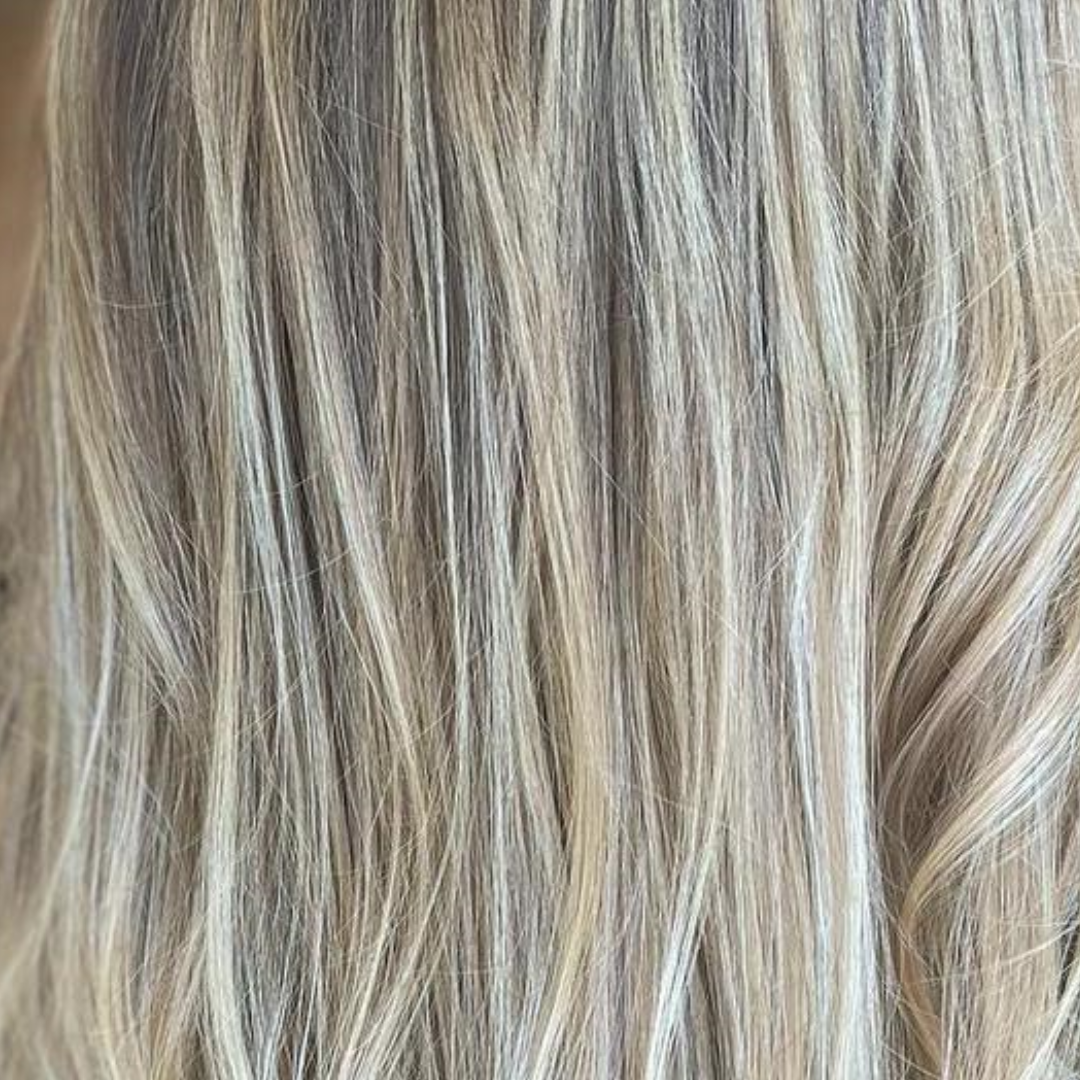Colour-treated hair can lose its vibrancy faster than expected. Blonde, bleached, or highlighted strands may develop yellow or brassy tones, while grey hair can appear dull. Sun exposure, chlorine, and heat styling often make this worse. A purple hair mask is an easy and effective way to refresh colour, neutralise unwanted warm tones, and maintain healthy-looking hair. These masks also nourish and hydrate strands, keeping hair soft, shiny, and manageable.
In this blog, we’ll explore whether a purple hair mask is suitable for dyed hair and how it can help maintain your colour, tone, and overall hair health.
Purple Hair Masks and Dyed Hair
The answer to the question, "Can you use a purple hair mask on coloured hair?" is yes. Purple masks are particularly beneficial for light-coloured hair, including blonde, bleached, or highlighted strands, which are prone to developing unwanted warm tones over time.
Applying a purple hair mask helps neutralise brassy hues and maintain the cool or ashy tones of your dyed hair. Additionally, the conditioning elements in these masks treat dryness often associated with colour-treated hair, leaving strands soft, shiny, and nourished.
How Purple Hair Masks Work on Dyed Hair
Purple hair masks contain violet pigments that work to neutralise yellow or brassy tones in light-coloured hair. This makes them especially effective for blonde, bleached, highlighted, and grey strands, helping hair maintain a cool, ashy, and vibrant appearance. In addition to toning, these masks provide conditioning and hydration, improving overall hair health and manageability. Here’s how they help different hair types:
1. Blonde or Bleached Hair
Purple masks are particularly effective on blonde or bleached hair. They neutralise warm, yellow tones, preventing brassiness and enhancing the brightness of lighter shades. Regular use keeps blonde hair looking fresh, shiny, and cool-toned between salon visits.
2. Grey Hair
Grey or silver hair can sometimes develop dull or yellowish tones. Purple masks help restore a crisp, silvery appearance while adding moisture and softness, leaving hair looking healthy and vibrant.
3. Highlighted Hair
Highlights or balayage sections can fade faster than the base colour. A purple mask tones the lighter strands without altering the darker base, ensuring the highlights stay cool and well-defined.
4. Overall Benefits for All Colour-Treated Hair
-
Deep conditioning and nourishment
-
Reduced dryness and frizz
-
Improved softness, shine, and manageability
-
Maintains hair health between colouring treatments
Usage Tips for Dyed Hair
To get the best results from your purple hair mask, follow these key tips:
-
Frequency: Use a purple mask once a week. Depending on hair condition, sun exposure, swimming habits, or heat styling, you may adjust the frequency slightly.
-
Timing: Do not leave the mask on longer than recommended, as it may cause a faint violet tint.
-
Product Choice: Select a mask formulated specifically for colour-treated hair. This ensures it tones and conditions without stripping your hair colour while keeping it hydrated and soft.

How to Use a Purple Hair Mask
Using a purple hair mask correctly is key to getting the best results. Here is how to use it for optimal toning, hydration, and hair health:
1. Wash and Prep Your Hair
Begin with a gentle shampoo to remove product build-up, dirt, and excess oils. Towel-dry your hair so it is damp but not dripping, allowing the mask to spread evenly and absorb effectively.
2. Apply the Mask Evenly
Focus on areas prone to brassiness, such as the ends, highlighted sections, or bleached strands. Use your fingers or a wide-tooth comb to distribute the mask evenly from roots to tips.
3. Timing Matters
Leave the mask on for 5 to 10 minutes, depending on how much toning your hair needs. Leaving it on longer may cause a faint violet tint, while too little time might not fully neutralise yellow tones.
4. Rinse Thoroughly
Rinse your hair completely with lukewarm water to remove all the mask. Follow with your usual conditioner or styling routine if desired.
5. Frequency of Use
For blonde, bleached, or grey hair, using a purple mask once a week is generally sufficient. Those who spend time in the sun, swim regularly, or use heat styling tools may benefit from slightly more frequent use to maintain vibrant, cool tones.
6. Choose the Right Mask
Always select a mask formulated for colour-treated hair. Look for options that tone and condition without stripping your hair colour while keeping it hydrated and soft.
Benefits of Using a Purple Hair Mask
Regular use of a purple deep conditioning mask can:
-
Neutralise yellow or brassy tones
-
Maintain cool and ashy shades between salon visits
-
Hydrate and strengthen colour-treated hair
-
Reduce dryness and breakage
-
Keep hair soft, manageable, and healthy-looking
Final Thoughts
Yes, you can confidently use a purple hair mask on dyed hair. It is a simple and effective way to protect your colour, neutralise brassy tones, and keep your hair soft, vibrant, and healthy-looking. Regular use ensures that blonde, bleached, highlighted, or grey strands maintain their cool, luminous tones between salon visits.
Incorporate our FUL Purple Intense Moisture Hair Mask into your weekly haircare routine. With its perfectly balanced violet pigments and nourishing ingredients, it refreshes your colour while hydrating and strengthening your hair, leaving it manageable, soft, and beautifully vibrant.
Add our purple hair mask to your routine today and enjoy brighter, healthier, and more radiant colour-treated hair.
Frequently Asked Questions
Can I use a purple hair mask on all dyed hair?
Purple masks work best on blonde, bleached, highlighted, or grey hair. Darker hair can benefit on highlighted sections.
Will a hair mask strip colour?
No, masks formulated for colour-treated hair tone while conditioning and protecting your colour.
How often should I use a purple mask?
Once a week is ideal. Adjust frequency depending on sun exposure, swimming, or heat styling.
Can I use a purple mask after colouring?
Yes, but wait at least a day after dyeing to avoid interfering with colour setting.
What happens if I leave the mask on too long?
Leaving it on longer than recommended may cause a faint violet tint, especially on very light hair.

